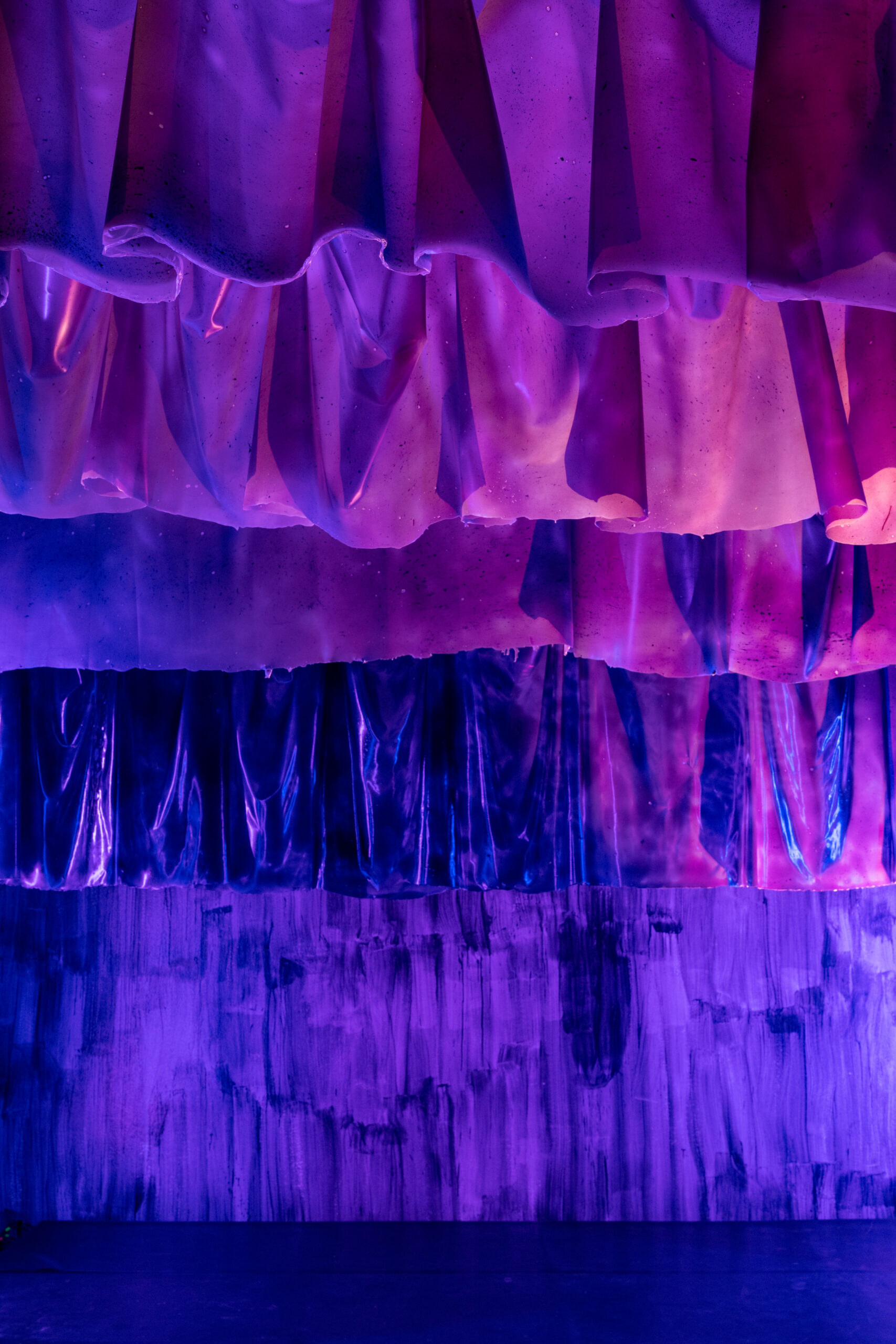 Installation view
of “CLUB LIASION” at fjk3 (Vienna, 2023). Photo: Simon Veres ©Gwangju Biennale
Installation view
of “CLUB LIASION” at fjk3 (Vienna, 2023). Photo: Simon Veres ©Gwangju BiennaleFor Austria's first national pavilion at
the Gwangju Biennale, the Lee Kang Ha Art Museum presents “CLUB LIASION,” an
exhibition by Austrian artist Liesl Raff, through December 1. The exhibition is
an expansive installation and performance space inspired by cabaret theatres
and underground clubs.
The title picks up the idea of a liaison,
an amorous relationship or form of exchange that flourishes in obscurity. The
artist has long been interested in notions of reciprocity, between the
different materials used in her sculptures, the space and the viewer, and her
collaborators and their own artistic practices.
For her project at the Lee Kang Ha Art Museum,
Raff has chosen to work with latex, a material that becomes rubbery when
exposed to air and attaches itself to surfaces. Hand-cast curtains in various
shades of purple with a glossy, almost sweaty appearance, are draped around the
space in different lengths and layers.
With a stage at its centre, dim wall lights
mounted on the surrounding walls, and a soundscape composed by Karolina
Preuschl, the distinction between on- and off-stage, retreat and performance
area, is blurred.
“Club Liaison” moves beyond a sculptural
intervention, extending an invitation for social interaction and participation.
Raff transforms the exhibition space into a sensory experience that opens
realms and protective spaces of community and conviviality. On several evenings
during the Biennale, “Club Liaison” will open its doors to become a venue for
live performances by Luca Bonamore & Lau Lukkarila, Stina Force, Haepaary,
Hyeji Nam, Danielle Pamp, Karolina Preuschl, Alex Franz Zehetbauer.
The invited Austrian-based and Korean
artists — whose
backgrounds range from contemporary dance and performance art to experimental
music — share an interest in reworking
popular forms of entertainment with a conceptual and experimental approach.

























